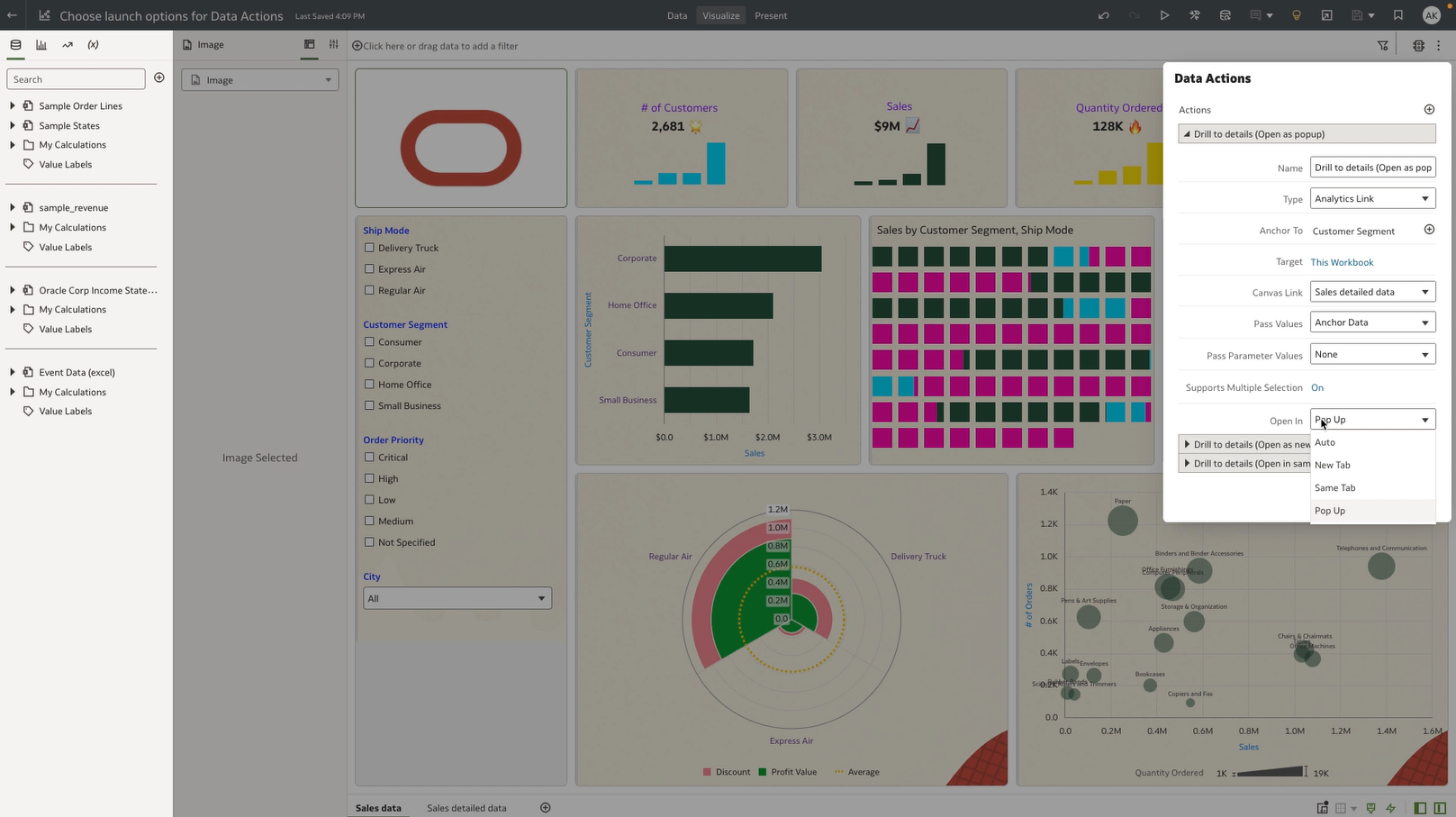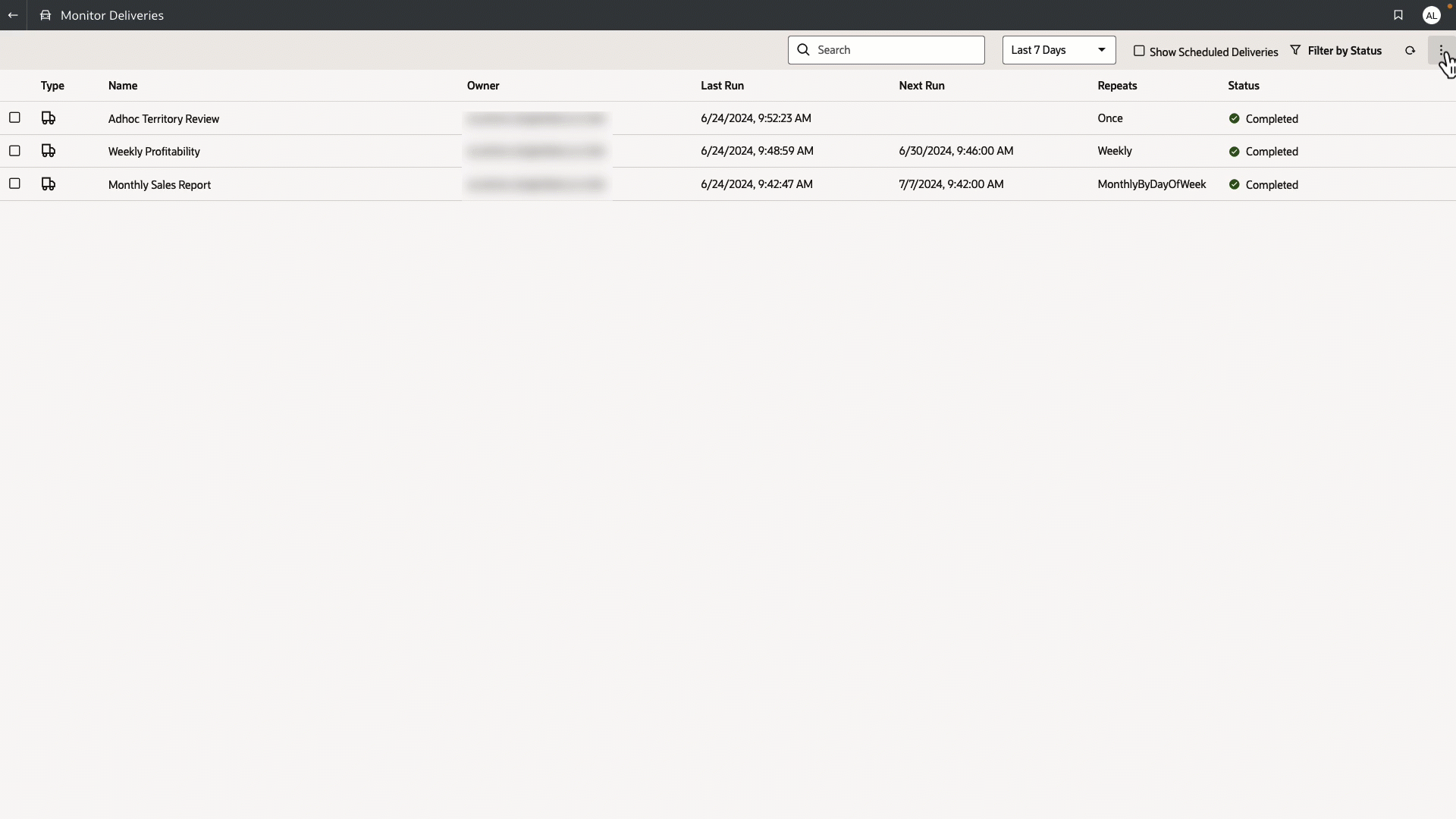As the Oracle Analytics community celebrates being named a Leader in the 2024 Gartner® Magic Quadrant™ for Analytics and Business Intelligence Platforms, the Oracle Analytics Cloud (OAC) July 2024 update introduces key new features throughout the analytics journey, from data preparation to exploration and storytelling.
Highlights from this update:
- Augmented Analytics: Improved UI for inspecting AutoML models.
- Flexible Data Actions: Launch data actions from multiple locations.
- New Data Prep and Exploration: Enhanced features from data preparation to storytelling.
- Advanced Visualization: New controls for conditional formatting and Sankey charts.
- Efficient Data Management: Faster data reload with Insert and Upsert options.
- Enhanced Admin Controls: Granular permissions and easy sharing via PDF/PNG.
- Mobile Access Simplified: QR Connect for streamlined OAC mobile app login.
Read below to discover more about how these updates can help transform data insights into intelligent decisions and take action more quickly and efficiently.
Augmented Analytics and Machine Learning
The July 2024 update builds on OAC’s intuitive user experience for machine learning, enabling both technical and business users to inspect their AutoML models and access general information, model details, quality assessments, and more—all in the same intuitive format as OAC’s native ML models as shown in Figure 1.

Exploring, Dashboarding, and Storytelling
Many of the new features in July 2024 are designed to accelerate analytics exploration. There are more controls for visualization formatting, including conditional formatting for totals and subtotals, which provides content authors the opportunity to easily highlight focus areas and illuminate trends through Tables and Pivot Tables, as shown in Figure 2. Sankey chart formatting has been enhanced to allow changes to node width, display of data labels, node gap ratio, and more.

The July 2024 update also offers new flexibility for OAC users looking to leverage data actions. Data actions connect insight to action, transporting users from their initial point of investigation to other relevant analyses and external sites. Users can now launch data actions from multiple locations, including from a new tab, within the same tab, or in a pop-up, as shown in Figure 3. This update allows creators to specify how users will experience and interact with their connected actions, whether inspiring fresh analysis in a new report via a new tab or seeing supplementary visualizations in context via a pop-up window.

Additional enhancements to OAC’s data exploration, dashboarding, and storytelling capabilities include the ability to exclude partial data in date-time filters, improving forecasting visualizations, and the introduction of vector-based map backgrounds for enhanced speed and performance. For instance, excluding incomplete or partial revenue periods is crucial for obtaining accurate insights in metrics that average results. Including partial periods would artificially lower the average and produce misleading views.
Data Connectivity, Modelling and Preparation
Big news for users managing large, regularly updated datasets! The July 2024 update delivers enhanced data reload options that require less time, energy, and effort, through the incremental cache data update. Providing stakeholders with the most up-to-date results previously required reloading the entire dataset. From July, OAC provides the alternatives to insert new data to existing data in cache, or to ‘Upsert’—inserting new rows as well as refreshing existing rows that have been updated (See Figure 4). This means that business users have the most accurate view of their business with less effort.

In addition, new Public REST APIs allow users to retrieve the run history from a data flow, to support performance monitoring and optimization, and enhanced auditability. This will make it faster and easier for administrators to gather information about how data flows are being used; identify performance issues early; and optimize their execution.
Administration
The July 2024 update introduces many new capabilities that make it easier for administrators and users sharing content, including:
- Greater granularity in administrator controls, such as ensuring that users gain access to exactly what they need—but nothing they don’t.
- Easy sharing of visualizations by administrators to intended users via PDF and PNG files through scheduled recurring emails to deliver analytics to people that may not always have analytics platform access.
- Smoother sharing of analytic content thanks to vanity URLs which can enable users to personalize links to their content.
- Tracking information sharing is now easier with the option to export email delivery reports to CSV files, as shown in Figure 5, including the ability to select the information included in a simple checkbox format. This helps administrators more easily report on the analytics platform utilization.

- Permissions are becoming more granular across a range of user actions from exporting workbook data and content, to managing security, snapshots, and social channels.
Enhancements to Oracle Analytics Mobile
Mobile analytics are increasingly in demand, which makes easy access a top priority. To that end, the Oracle Analytics app has made it even easier to connect to your OAC instance via the mobile application with QR Connect. Users now just scan a QR code to be taken directly to their OAC app login, streamlining access to their analytics without having to insert their expanded instance URL.
Conclusion
The range of features introduced in the July 2024 update to Oracle Analytics Cloud empowers both business and technical users, to streamline data exploration and share insights. With its ongoing innovation, ease-of-use, and enterprise-level security and governance, OAC continues to be a platform that people rely on to enable intelligent, data-driven decisions across all levels of an organization.
For more information:
- What’s new documentation for Oracle Analytics Cloud July 2024
- YouTube Feature Playlist
- Oracle Analytics Community
- Oracle Analytics capabilities explorer

